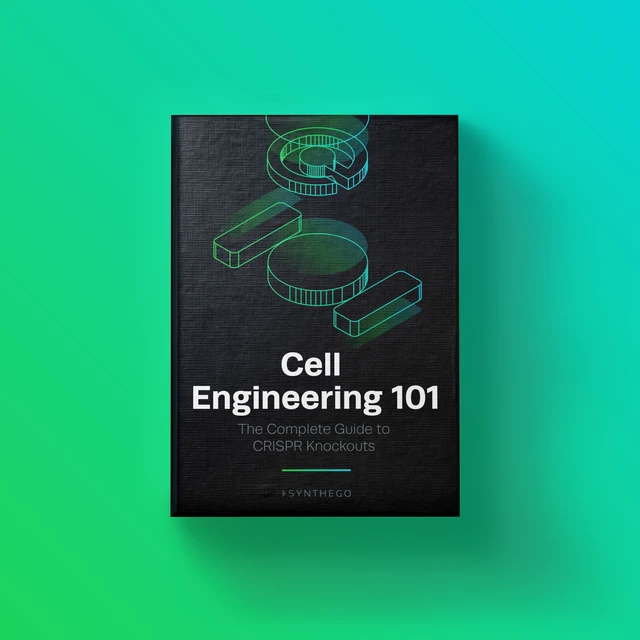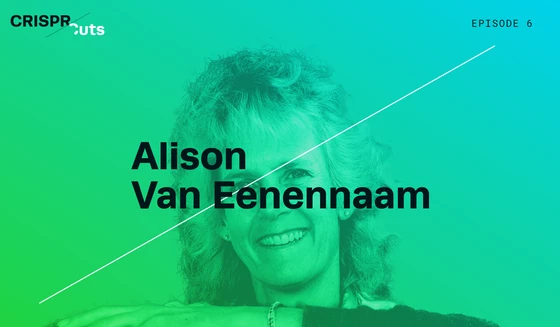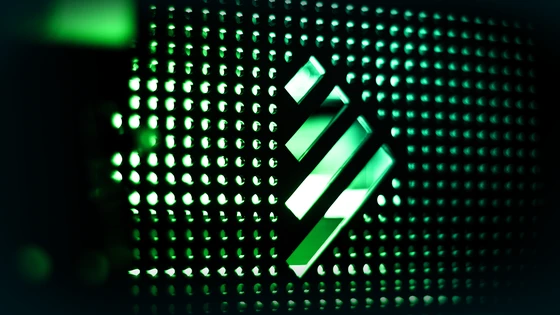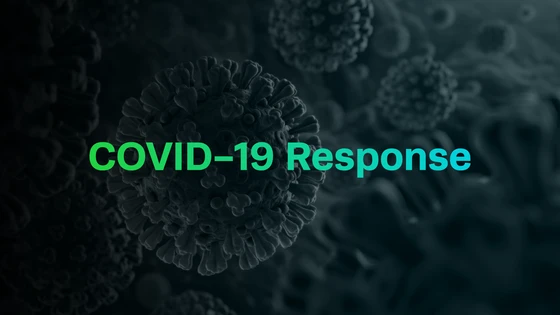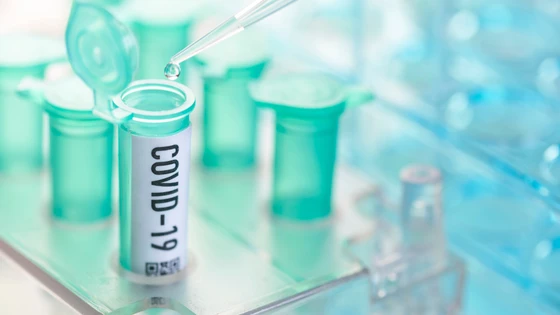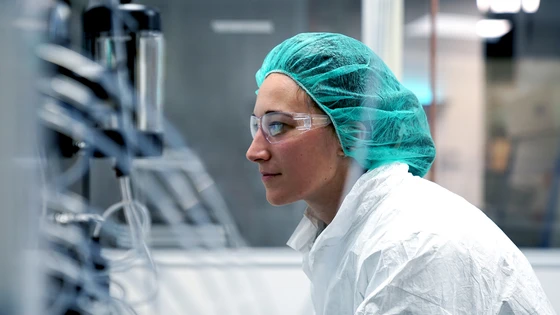Contents
Why do we need genetically modified cows created with CRISPR gene editing technology? Aren’t GMOs bad for you? The short answer is a resounding no - GMOs have many uses, including preventing the extinction of species of plants and animals, and helping them be more resilient to their environment. And in the case of the non-sustainable cattle industry, CRISPR is also helping with animal welfare by preventing cruel mutilations of calves that are commonplace on farms.
In the CRISPR Cuts podcast, we chatted with Alison Van Eenennaam, a geneticist at UC Davis. Her research group uses genome editing technologies in beef cattle production and animal welfare projects, the latest ones involving generating hornless dairy cows and her famous “All Boys” project.
Listen to the podcast or read the interview (plus extra info) in this article. The choice is yours!
Read on or listen to the podcast on iTunes to learn more about Alison Van Eenennaam’s latest projects, the current regulatory issues around genetically engineered cattle, and the unique technical challenges of working with cattle, instead of mice, as a model system. For now, let’s start with the basics of how this science works to make transgenic cows.
How Genome Engineering is Helping Cattle Farming
GMO cows (genetically modified organisms) is a commonplace term used for cattle whose genome has been edited to give it traits it does not naturally possess, including disease resistance, lack of horns, and the ability of females to produce greater quantities of beef by adopting physical traits more similar to male cows.
CRISPR-edited cows are not dangerous to human health, as they merely alter the genome of the cows, helping them thrive in an industry that is currently not sustainable, and improve animal welfare. For example, the dehorning of livestock is commonplace on dairy farms, and is done by burning off the horns of calves; CRISPR can create cows that are born without horns by isolating the gene that causes it, and cutting it out.
There are many applications of CRISPR that can be applied to both the beef and dairy industry, significantly improving many aspects of it.
5 Key Takeaways From This Podcast About Genetically Modified Cattle
In this podcast, we cover many of these applications and solutions CRISPR provides for cows. Here are some of the main points you don’t want to miss out on:
1. Cow dehorning is painful; CRISPR can achieve it naturally with no painVan Eenennaam’s team has successfully edited cows with CRISPR to allow them to be born without horns, and currently has 6 cows that pass this genetic trait on naturally, helping to improve animal welfare in the industry.
Time in podcast: 6:25
Van Eenennaam’s team has successfully edited cows with CRISPR to allow them to be born without horns, and currently has 6 cows that pass this genetic trait on naturally, helping to improve animal welfare in the industry.
Time in podcast: 6:25
2. Female cows with male traits could help reduce the environmental impact of the industryBy producing females that have the body type of males, they will produce more beef, and shorten their environmental impact while growing.
Time in podcast: 9:20
By producing females that have the body type of males, they will produce more beef, and shorten their environmental impact while growing.
Time in podcast: 9:20
3. CRISPR cows would make the beef industry more sustainableBy helping to cure diseases, reduce horn-related deaths and injury, and other genetic improvements, both the beef and milk industries could be improved.
Time in podcast: 14:00
By helping to cure diseases, reduce horn-related deaths and injury, and other genetic improvements, both the beef and milk industries could be improved.
Time in podcast: 14:00
4. Regulatory processes are flawed and inconsistent, while fear of GMOs is monetizedRegulations make it difficult to get these products to market, mainly due to the GMO scare and the plethora of misinformation being put out into the common world that all GMOs are bad for you.
Time in podcast: 16:30
Regulations make it difficult to get these products to market, mainly due to the GMO scare and the plethora of misinformation being put out into the common world that all GMOs are bad for you.
Time in podcast: 16:30
5. CRISPR can help create disease-resistant cows and other animals20% of cows and other animals in the livestock industry are lost to disease each year. CRISPR can help prevent this waste and loss of life.
Time in podcast: 23:05
20% of cows and other animals in the livestock industry are lost to disease each year. CRISPR can help prevent this waste and loss of life.
Time in podcast: 23:05
Genetically Modified Animals List: What Else is Out There?
It’s clear that there’s a lot going on with genetically engineered cows and GMO beef, but what about other animals and animal products? Here’s a short list with some links to learn more:
- GMO chicken & eggs - producing proteins in their eggs that could cure diseases such as cancer
- GMO pigs - making them immune to porcine reproductive and respiratory syndrome (PRRS) virus
- GMO mosquitoes - CRISPR could help cure malaria using a gene drive
- GMO salmon - making salmon sustainable (as it currently isn’t)
- GMO goats - produce a silk-like material (like spiders) in their milk that can be used to produce bulletproof vests
Alison Van Eenennaam’s Backstory & Research
Learn how Van Eenennaam got started in this research, and how she’s qualified to work on these groundbreaking projects.
Kevin Bryant: Could you please tell us about your background and how you got into editing genomes of cattle?Alison Van Eenennaam: I currently work in the Department of Animal Science at UC Davis. I come from Australia, where I did an undergraduate in agricultural science and got interested in animal genetics. I pursued a Masters and Ph.D. at UC Davis in animal genetics, and in 2002, I started working in this department with both a research appointment and an extension appointment to translate science to farmers and the general public.
I focus on cattle genomics and use whatever breeding method makes the most sense to try to make cattle that are well suited to production systems and animal welfare traits.
Alison Van Eenennaam: I currently work in the Department of Animal Science at UC Davis. I come from Australia, where I did an undergraduate in agricultural science and got interested in animal genetics. I pursued a Masters and Ph.D. at UC Davis in animal genetics, and in 2002, I started working in this department with both a research appointment and an extension appointment to translate science to farmers and the general public.
I focus on cattle genomics and use whatever breeding method makes the most sense to try to make cattle that are well suited to production systems and animal welfare traits.
Minu Prabhune: One of your recent projects about producing dairy cows without horns sounds extremely interesting. Could you elaborate on that?Alison: That project is being done in conjunction with a company called Recombinetics, who use genome editing agents called TALENs to introduce a known naturally occurring genetic variation that doesn't grow horns from Angus (black beef) cattle into the black and white Holstein dairy cows.
Alison: That project is being done in conjunction with a company called Recombinetics, who use genome editing agents called TALENs to introduce a known naturally occurring genetic variation that doesn't grow horns from Angus (black beef) cattle into the black and white Holstein dairy cows.
How Removing Cattle Horns Using CRISPR Could Benefit the Industry
Why are cattle horns dangerous to humans and other animals? How do their horns impact cattle production?
Alison: Normally, dairy cows grow horns, which are quite dangerous to other cows and also to their human handlers, who can get gored. Typically, those horns are removed by burning them off when they are young calves. The idea of this project was to introduce a dominant allele so that the cows don't grow horns, meaning that those dairy cows would be genetically dehorned rather than doing it physically.
We now have six of these engineered offsprings that faithfully transmitted that gene forward, so those animals also didn't grow horns. This is really an animal welfare trait that we are trying to work on; the beneficiary is the cow as it doesn’t have to undergo the procedure of horn removal.
Minu: So, the ultimate aim is to produce many generations of these cows without horns, and then these cows would be commercially sold to other companies?
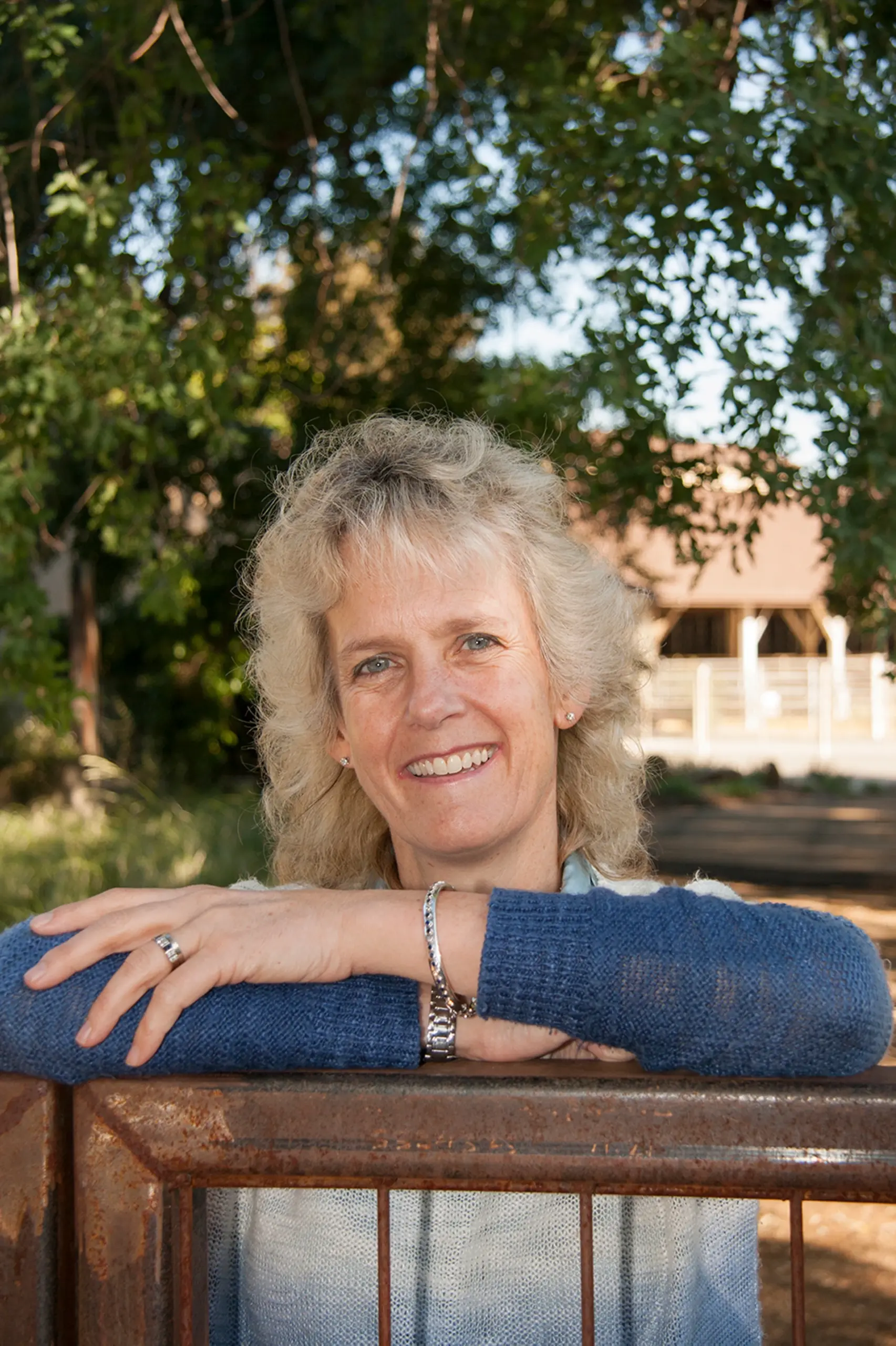
Alison: The way that dairy cattle breeding works is that these cows are mostly bred using artificial insemination. The bulls that are providing the genetics to be fathers of the next generation would be edited such that they do not have horns, and they would pass that dominant trait onto their offspring. About 70% of all dairy cows are artificially inseminated, so if you used semen from those bulls, then obviously the offsprings of those animals wouldn't grow horns.
We have modeled that over 20 years, so you would eventually have all of the dairy population carrying that allele that doesn't grow horns, and dehorning would ideally be a thing of the past. But that's very much dependent on whether or not we're actually able to use this technology in food animal production.
At the moment, there's quite a complicated regulatory discussion going on there as to what's the appropriate regulatory structure to put in place for food animals that have been edited for traits like these, where it's not introducing novel genetics from a different kingdom or anything. It's really just introducing a useful genetic variant from one breed, Angus, into another, in this case, Holstein.
The “All Boys” Project: Female Cows with Male Traits
Learn more about this project, aiming to allow female cows to have the properties of male cows to help cut down the impact of the industry on the environment.
Minu: I read about another interesting ongoing research project in your lab, called “Boys Only”. What is that about?Alison: This is just a very fundamental research project that is being done using CRISPR. The overall hypothesis is that there's a single gene, SRY, that determines maleness. Hypothetically, if we were to duplicate that gene and integrate it into the X chromosome of a male, then we will get X carrying SRY gene and Y males. The Y chromosome bearing semen from a bull like that would be normal, but the X chromosome semen would be carrying the SRY gene.
Our hypothesis, based on experiments in mice, is that those X-SRY females would, in fact, have the appearance and other properties of males. These animals would be infertile, but the reason that we might want something like that males are more efficient at converting feed to gain or beef. So, they are more desired in the beef production industry because they are able to get to market faster and consume less feed, and of course, that reduces the environmental impact of production.
Alison: This is just a very fundamental research project that is being done using CRISPR. The overall hypothesis is that there's a single gene, SRY, that determines maleness. Hypothetically, if we were to duplicate that gene and integrate it into the X chromosome of a male, then we will get X carrying SRY gene and Y males. The Y chromosome bearing semen from a bull like that would be normal, but the X chromosome semen would be carrying the SRY gene.
Our hypothesis, based on experiments in mice, is that those X-SRY females would, in fact, have the appearance and other properties of males. These animals would be infertile, but the reason that we might want something like that males are more efficient at converting feed to gain or beef. So, they are more desired in the beef production industry because they are able to get to market faster and consume less feed, and of course, that reduces the environmental impact of production.
The Unique Challenges of Using CRISPR to Edit Cows
Alison: We need to do a homology-directed repair in an embryo using a template that would introduce that gene onto the X chromosome, and so one of the challenges is achieving that at a high enough efficiency. It has taken us a long time to get the knock-ins working efficiently in eggs or in embryos.
In cows, you have to get the eggs from somewhere too; we get ovaries from dead cows. We aspirate immature follicles out of those ovaries, put them in maturation media to make them receptive to fertilization, fertilize them, inject with our editing reagents, and then they have to go through seven days of culture after which we biopsy them. If they survive that, and if they have what we want, then we freeze them, defrost them, transfer them into synchronized cows, and that's only a 15% success rate, and that's just to test if what we think is true is actually true.
We are actually getting ready to transfer those knock-ins into cows soon, so I am really excited but also kind of nervous because so much can go wrong. It all depends on so many factors: whether the cows are synchronized correctly in their ovulation cycle, whether the semen inseminates the egg, and whether the eggs develop normally in culture. Then, we do a biopsy assay, and the cows have to recover from the biopsy, they have to get pregnant, and then they have to carry them to term.
It's really expensive and really risky; that's part of the reason that it has been difficult to get investment in this area. I certainly get jealous of the mouse people, especially with their three-week generation interval. I've got a nine-month pregnancy and then two years until a cow is fertile to get bred. So if I have a calf born today, I'm not gonna get a calf from her until two years and nine months from now!
When you're writing a three-year grant, there's no way you actually do anything in that period. These are the unique challenges associated with working with large animals that are not true with mice or other smaller animal models.
Dangers of the Cattle Industry Without CRISPR Cows
It’s a common misconception that GMOs are dangerous, because they are often confused with things such as hormone or steroid injection. In fact, the cattle industry is in real danger without the help of CRISPR gene editing.
Kevin: One of the points that you touched on was about using fewer resources to turn any kind of food into meat for humans, and ultimately that's still part of the goal of this project, right?Alison: I believe that genetics is really important because if you look at the productivity of plants and animals today versus a hundred years ago, you know genetics has enabled us to produce dramatically more food on less land using fewer animals than we would have if we hadn't made those genetic improvements.
Genetic engineering enables us to introduce useful variations into our breeding programs in a very targeted way that really accelerates the type of genetic improvement that we can achieve in our plants and animals. There are many sustainability goals that can be addressed with breeding, and I really think that's an important use of this technology in our food production systems.
Alison: I believe that genetics is really important because if you look at the productivity of plants and animals today versus a hundred years ago, you know genetics has enabled us to produce dramatically more food on less land using fewer animals than we would have if we hadn't made those genetic improvements.
Genetic engineering enables us to introduce useful variations into our breeding programs in a very targeted way that really accelerates the type of genetic improvement that we can achieve in our plants and animals. There are many sustainability goals that can be addressed with breeding, and I really think that's an important use of this technology in our food production systems.
Minu: Are there any other projects ongoing that you are excited about in the pipeline?Alison: Lots! If you're not excited right now, you're not paying attention. The real power of this technology is that you can test a lot of fundamental basic hypotheses, and if they work as you predict they might in a lab, then there's a lot of potential applications in the world.
One that I think is most interesting is whether we might be able to use editing to enable the production of animals that are carrying gene lines that belong to very elite animals. Basically, you could have commercial bulls out there that are actually delivering semen or genetics from the very best bulls in the breed, and it is a way to enable commercial bulls to deliver the very best genetics in a natural service way.
This provides incredible genetic improvement opportunities in extensive livestock industries like sheep and beef cattle in a way that we haven't been able to do it up until this point because there's just no way to bring in all of those cows from the range and get them inseminated when they are at the right stage of their heat cycle. The fact that we could have much-improved beef cattle genetics that would reduce the environmental footprint of beef production, is kind of a win-win and a really exciting application of this technology.
Alison: Lots! If you're not excited right now, you're not paying attention. The real power of this technology is that you can test a lot of fundamental basic hypotheses, and if they work as you predict they might in a lab, then there's a lot of potential applications in the world.
One that I think is most interesting is whether we might be able to use editing to enable the production of animals that are carrying gene lines that belong to very elite animals. Basically, you could have commercial bulls out there that are actually delivering semen or genetics from the very best bulls in the breed, and it is a way to enable commercial bulls to deliver the very best genetics in a natural service way.
This provides incredible genetic improvement opportunities in extensive livestock industries like sheep and beef cattle in a way that we haven't been able to do it up until this point because there's just no way to bring in all of those cows from the range and get them inseminated when they are at the right stage of their heat cycle. The fact that we could have much-improved beef cattle genetics that would reduce the environmental footprint of beef production, is kind of a win-win and a really exciting application of this technology.
"Genetic engineering enables us to introduce useful variations into our breeding programs in a very targeted way that really accelerates the type of genetic improvement that we can achieve in our plants and animals."
When Will CRISPR Cows Be On the Market?
So this technology may really help us - when will it be available for average people to consume?
Kevin: How far away do you think we are from having genetically engineered cattle contribute to milk and food in the real world?Alison: I think when might we see these animals in the food supply is going to be very much dependent upon how we approach the regulatory situation. If we look at animals that are expressing a transgene, there has basically been one approval in 30 years. That's the fast-growing genetically engineered salmon, and that product is still not commercially available in the United States. It has not had a very happy regulatory adventure, and basically, the lack of pass to market has really disincentivized investments in the development of genetically engineered animals.
So, if there is an equally difficult path to market for gene edited animals based on the fact that they were edited, rather than the fact that there is any novel product risk associated with those animals, then I fear that I won't be sitting in the office in 30 years time.
Having said that, other countries are making different decisions. Canada, for example, has a regulatory process based on novel product risk rather than the use of editing to introduce intentional variations in the genome. So, there is quite a bit of disharmony in the global regulatory approaches at the current time.
Alison: I think when might we see these animals in the food supply is going to be very much dependent upon how we approach the regulatory situation. If we look at animals that are expressing a transgene, there has basically been one approval in 30 years. That's the fast-growing genetically engineered salmon, and that product is still not commercially available in the United States. It has not had a very happy regulatory adventure, and basically, the lack of pass to market has really disincentivized investments in the development of genetically engineered animals.
So, if there is an equally difficult path to market for gene edited animals based on the fact that they were edited, rather than the fact that there is any novel product risk associated with those animals, then I fear that I won't be sitting in the office in 30 years time.
Having said that, other countries are making different decisions. Canada, for example, has a regulatory process based on novel product risk rather than the use of editing to introduce intentional variations in the genome. So, there is quite a bit of disharmony in the global regulatory approaches at the current time.
Minu: Let's assume all the regulations are passed and we do have these foods in the market. Do you think the public is ready for these products?Alison: If I look at current breeding programs, I think the public wants to be assured that animals are being treated in a good way, and so I think that there's potential for public buying for attributes like dehorning, where we are actually trying to do something to help animal welfare.
Disease resistance, particularly, is one that does tick the three boxes of sustainability. I think we haven't really had that discussion yet, and so it's very hard to predict what the public reactions are going to be, but I have actually done a little bit of informal polling with audiences at public events here on campus where we have had the calves out and they have been able to look at them and touch them and see that they are just cows without horns. There, we have high rates of support for using the technology for this particular purpose.
I think a little bit will depend on the behavior of competing industries towards this technology, as to how they're going to play it and whether they're going to monetize fear around this technology in the same way they have with the GMOs.
Alison: If I look at current breeding programs, I think the public wants to be assured that animals are being treated in a good way, and so I think that there's potential for public buying for attributes like dehorning, where we are actually trying to do something to help animal welfare.
Disease resistance, particularly, is one that does tick the three boxes of sustainability. I think we haven't really had that discussion yet, and so it's very hard to predict what the public reactions are going to be, but I have actually done a little bit of informal polling with audiences at public events here on campus where we have had the calves out and they have been able to look at them and touch them and see that they are just cows without horns. There, we have high rates of support for using the technology for this particular purpose.
I think a little bit will depend on the behavior of competing industries towards this technology, as to how they're going to play it and whether they're going to monetize fear around this technology in the same way they have with the GMOs.
Bovine Tuberculosis & Other Diseases Facing Cows
Much of our livestock is lost each year to diseases and other environmental factors that kill animals or make them sick. CRISPR could help prevent this loss.
Kevin: You mentioned using gene editing technology to protect animals from infections. Is that something that you and your group are also working on?Alison: Our group specifically isn't working on this, but there are groups working to produce tuberculosis-resistant cattle, Avian Flu-resistant chickens, and African Swine Fever-resistant pigs. We lose about 20% of animal protein globally to disease, so disease resistance is a really big focus for animal breeders.
Moving forward, I hope that we talk about both risks and benefits rather than just risks, which I think was missing in the early GMO discussions. It is really an important thing for society to consider, because if you say no to breeders that want to use gene editing to create disease-resistant animals, you are still going to have that disease.
At the moment, this can result in the death of infected humans, or require treatment with antibiotics. Neither of which are optimal solutions to me, and in that case, I think a genetic solution is better. Discussing those trade-offs is important because saying no to genetics has a really big environmental impact, and one that's perhaps not obvious when you say no.
Alison: Our group specifically isn't working on this, but there are groups working to produce tuberculosis-resistant cattle, Avian Flu-resistant chickens, and African Swine Fever-resistant pigs. We lose about 20% of animal protein globally to disease, so disease resistance is a really big focus for animal breeders.
Moving forward, I hope that we talk about both risks and benefits rather than just risks, which I think was missing in the early GMO discussions. It is really an important thing for society to consider, because if you say no to breeders that want to use gene editing to create disease-resistant animals, you are still going to have that disease.
At the moment, this can result in the death of infected humans, or require treatment with antibiotics. Neither of which are optimal solutions to me, and in that case, I think a genetic solution is better. Discussing those trade-offs is important because saying no to genetics has a really big environmental impact, and one that's perhaps not obvious when you say no.
Other GMO & CRISPR Podcasts You May Enjoy
Want more great podcasts to keep learning about CRISPR and science in general? Check out our list of the top CRISPR podcasts or the best science podcasts to find more great episodes to stay up-to-date with the latest developments. We’ve also compiled a list here of a few you may enjoy:
Andrew Porterfield | CRISPR in the Grocery Store
This article + podcast can give you more insight on how CRISPR is working in the food industry now, how it actually helps the world of agriculture, and which foods may be coming to a store near you in the not-too-distant future.
TED Talks Science & Medicine | How CRISPR Lets Us Edit Our DNA
In this TED Talk given by Jennifer Doudna, learn more about the basics of how CRISPR works, and why it is such a revolutionary science.
Avery Posey | CAR T Therapy: Treating Cancer with Engineered Cells (with Podcast)
In this article + podcast, Avery Posey explains how CAR T cell therapy is treating cancer in a much more efficient, non-toxic way than chemotherapy does - using the patient’s own cells!
Learn about what groundbreaking discoveries have been going on in the world of CRISPR, and what’s to come in the near future.
Ania Wronski | How Knockout Cell Pools are Revolutionizing CRISPR Research
If you’re all set on CRISPR basics, take your knowledge to the next level with this explanation of how knockout cell pools work, and how they’re changing the face of CRISPR.
If you prefer other ways to get your CRISPR news, head over to our comprehensive list of all the best CRISPR news sources to find the best option for your favorite way to learn.
Cell Engineering 101
CRISPR has ignited a revolution. Although it’s a relatively recent discovery in the history of biotechnology, CRISPR has quickly become a standard laboratory tool and cell engineering is transforming research. One of the most widely used applications of CRISPR is knocking out specific genes in cell lines to interrogate gene function.
